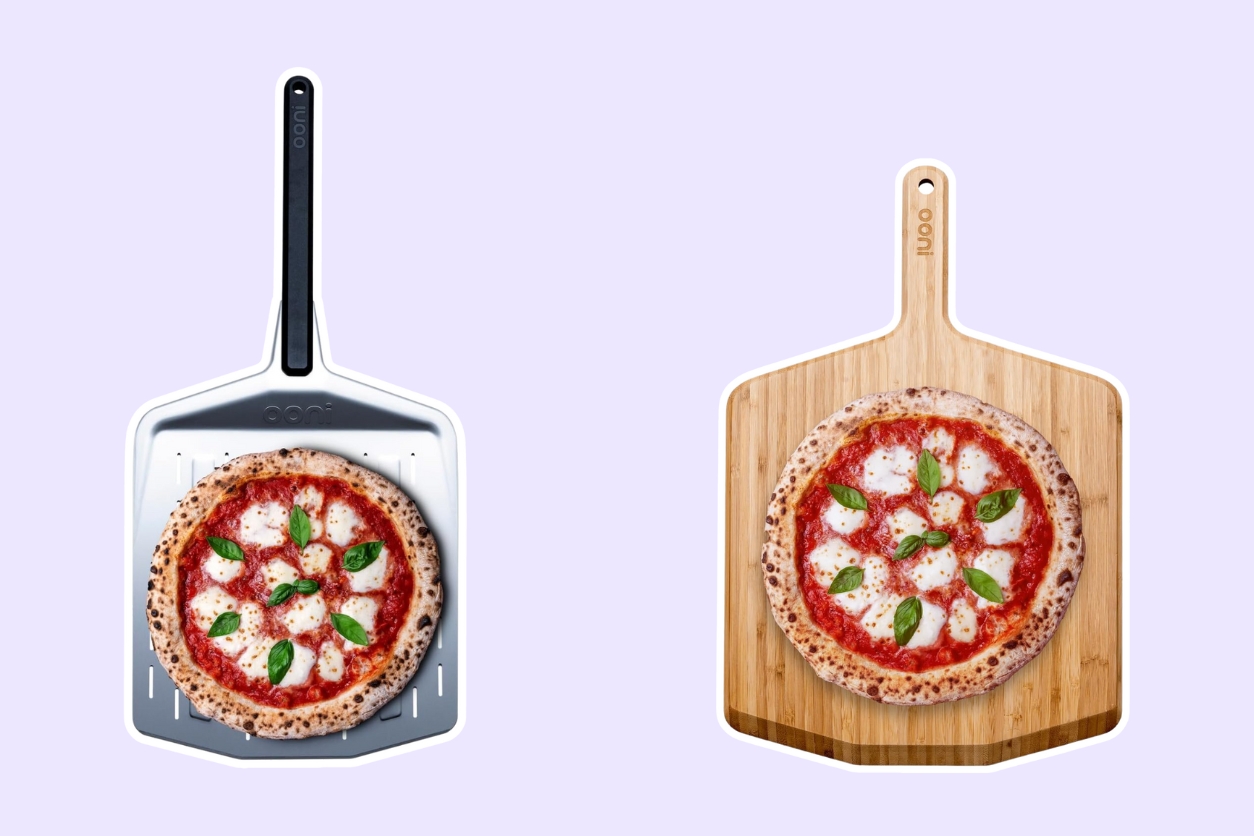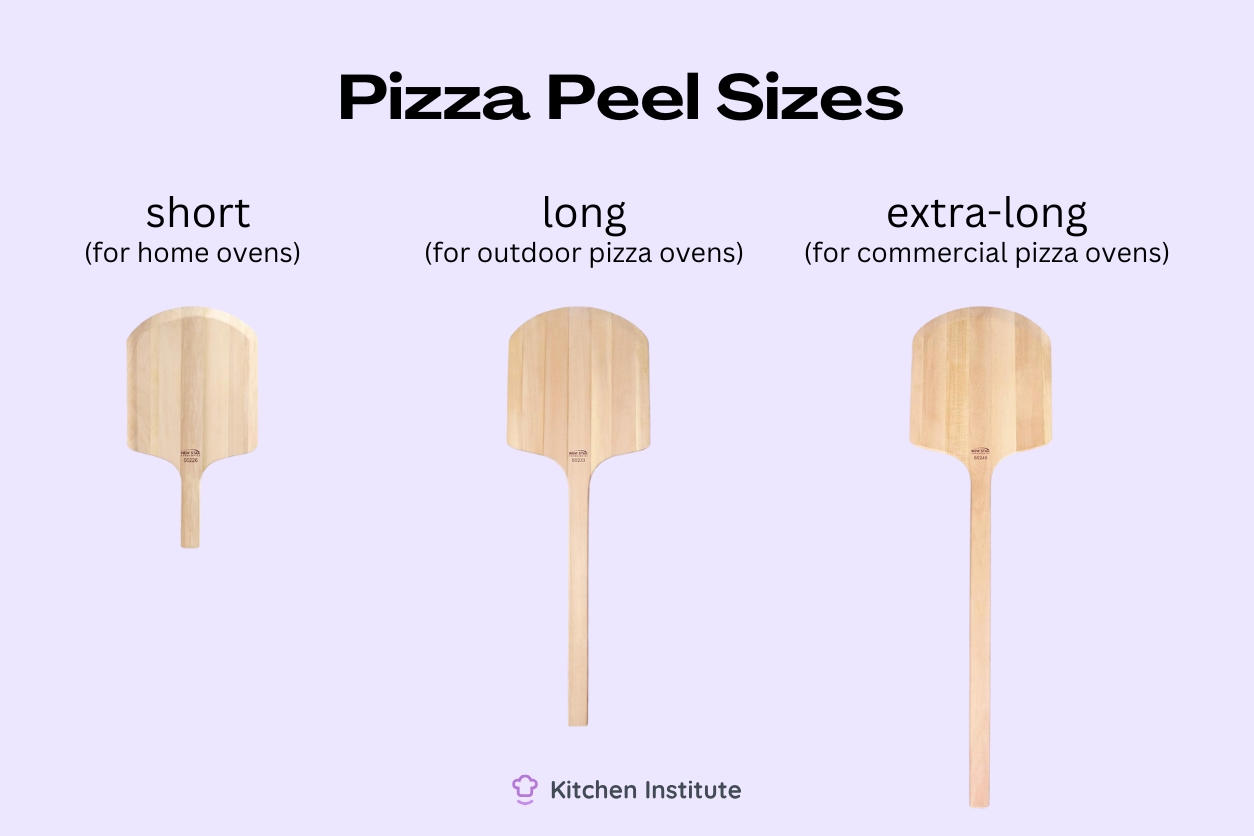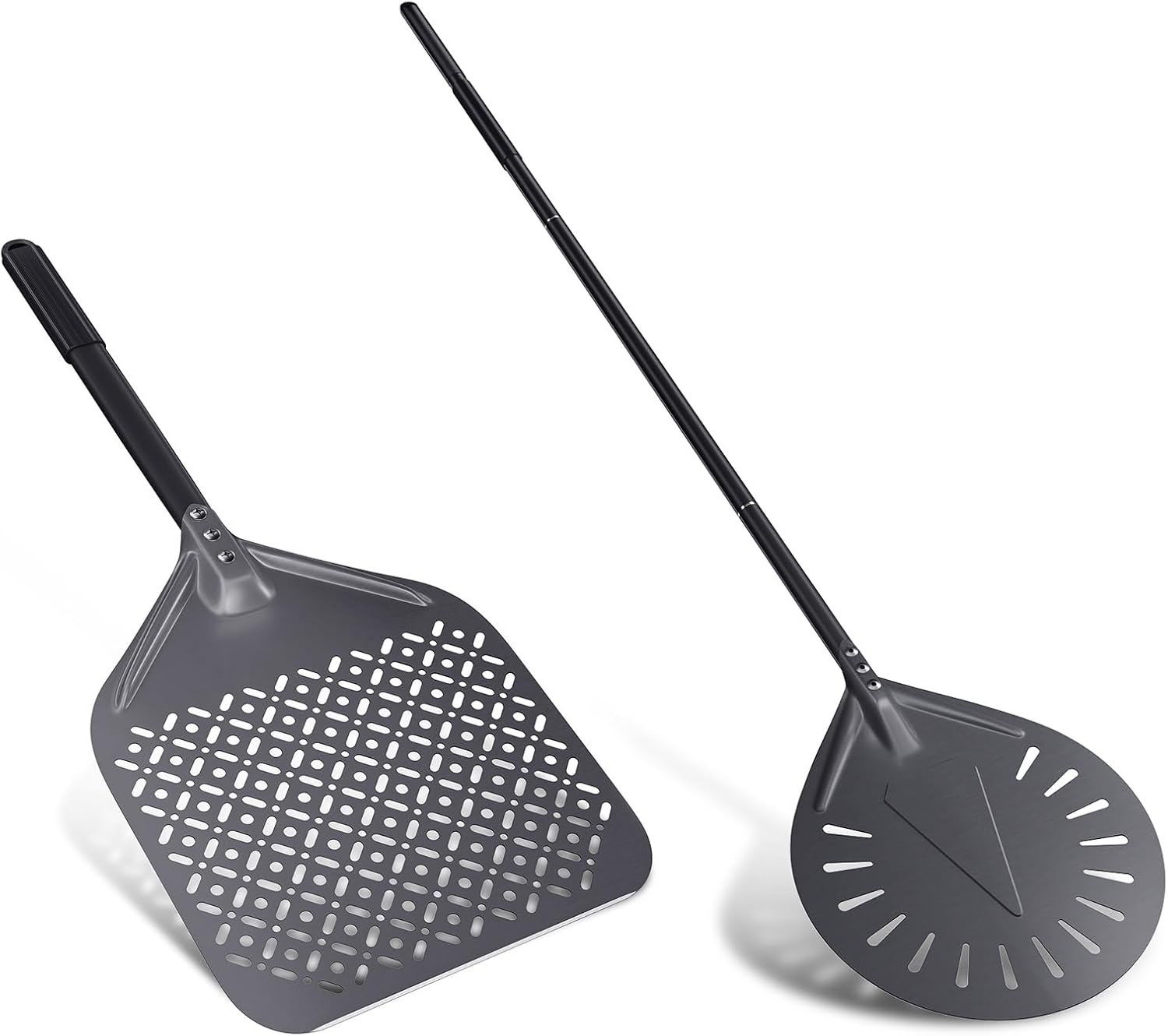Pizza Peel vs. Paddle: Which One Is Better?

TL;DR
Pizza peel has a thin, broad surface, usually metal, that lets you get right under the pizza to turn or retrieve it without disrupting any toppings. Meanwhile, the pizza paddle, traditionally wooden, offers a sturdy, slightly thicker platform ideal for launching raw dough into the oven.
pizza peel
If you’re just starting out, the terms ‘pizza peel’ and ‘pizza paddle’ probably sound a bit interchangeable, and in some cases, they can be. But if you’ve had your hands on both in the kitchen, you know they each bring unique strengths to the pizza-making process, making a noticeable difference when it comes to handling dough, managing oven heat, and ensuring the final pizza lands in one piece on your plate. Today, we’ll explore what sets each apart, so you can make an informed choice about which one to use—or if you need both.
Pizza Peel for Turning and Retrieving
A pizza peel is a familiar sight in any pizzeria, typically made from metal with a long handle to keep hands safely distanced from a hot oven. Its main job? Turning and retrieving pizzas during the baking process, a task that demands precision without disturbing the toppings. The metal construction makes it thin enough to slide under a pizza with minimal disruption—exactly what you need once your dough has crisped up but still needs a little maneuvering for even cooking.
Most pizza peels are designed with perforations to prevent excess flour from sticking, so your oven doesn’t get overloaded with burned bits. The perforations also help reduce the sticking problem often encountered with raw dough on metal surfaces. So if you’re making a pizza that needs a few turns in the oven for that perfect, even bake, a pizza peel is your best friend.
Pizza Paddle for Launching Dough
Think of the pizza paddle as the counterpart to the peel—a sturdy, often wooden tool perfect for the starting point of your pizza-making journey. If you’ve ever tried to slide a raw, fully topped pizza onto a blazing hot stone or oven shelf, you know it’s no small feat. This is where the paddle shines, especially with its natural non-stick quality that wooden surfaces offer, making it much easier to slide the dough off smoothly. You can dust the paddle with a bit of flour or cornmeal, which will help the dough release as you angle it into the oven.
Wood paddles are also more forgiving for beginners, as the dough clings less to the rougher surface compared to metal. This is particularly useful when working with moist doughs or for those just starting with homemade pizzas. And unlike peels, paddles tend to be thicker and sturdier, which makes them an excellent option if you’re working with larger, heavier pizzas.
Handle Length
Whether you’re using a peel or a paddle, handle length matters—especially if you’re cooking in a deep oven or an outdoor setup. A long handle keeps you at a safe distance from the intense heat, which is crucial in high-temperature ovens often used for making pizza. Generally, pizza peels have longer handles than paddles, which is helpful for the turning and retrieving process since you’ll be reaching deeper into the oven.
For home ovens, a shorter handle on a paddle might be sufficient, as you’re mostly concerned with getting the pizza onto the stone or rack without losing any toppings. But if you’re working with a larger, wood-fired oven, investing in a peel with an extended handle is a smart choice to keep your hands away from the heat while you maneuver your pizza. The extra length also allows for a better grip and more control, making it easier to slide the pizza out without any spills.
Choosing Between Wood and Metal
When it comes to the material, you’ll often find that pizza paddles are wooden while peels are predominantly metal. Each material has its benefits, and which you choose depends on your preference and skill level. Wood paddles are naturally less sticky, which makes them a top choice for loading raw pizzas. The wood absorbs some of the dough’s moisture, preventing it from clinging to the surface. The drawback? Wood can be a bit bulky and is harder to clean since it can’t go in the dishwasher.
On the flip side, metal peels are perfect for turning and retrieving. Their thin, lightweight design makes it easy to get under a pizza without disturbing the toppings. They’re easy to clean and more durable in the long run, but they do have one downside—dough can stick, especially if it’s moist. Adding a bit of flour or cornmeal to the peel can help, but this step requires extra care to avoid burned flour in the oven. So if you’re planning to handle pizzas frequently, especially in a home or outdoor pizza oven, it’s worth considering both types to cover each stage of cooking smoothly.
Finding Your Preferred Size and Shape
Another point to consider is the size and shape of your pizza peel or paddle. Peels come in a range of sizes, with larger, rectangular peels suited for bigger pizzas, while smaller, round ones work well for individual pies or smaller oven setups. Similarly, paddles come in different dimensions, and the size you choose depends on the type of pizza you’re making and your oven size.
For larger family-style pizzas, a big paddle can hold a loaded pie without any risk of toppings spilling over the edge. But if you’re aiming for smaller, personal pizzas, a compact peel might be more convenient, especially in tight kitchen spaces. Whichever size you go for, ensure it fits comfortably in your oven and allows enough room for you to maneuver with ease.
Specialty Peels for Advanced Pizza Makers
If you’re diving deeper into the art of pizza, there are specialty peels designed to make more advanced techniques easier. A turning peel, for instance, is specifically crafted for rotating pizzas in high-heat environments, such as wood-fired ovens. This tool is typically smaller and round, with a smooth edge that lets you spin the pizza for even cooking without lifting it entirely.
For those who love experimenting, there are also perforated peels that allow excess flour to fall through, preventing that burnt-flour taste on the bottom of your pizza. These specialty options might not be necessary for everyone, but they’re handy if you’re working with high temperatures or more delicate doughs.
Our Recipe for Trust: Why Choose Kitchen Institute
At the Kitchen Institute, we're dedicated to providing reliable and accurate information on cooking trends, tips, and product reviews. Our team of passionate food enthusiasts ensures that every piece of content is thoroughly researched and based on real-world experience. We pride ourselves on our comprehensive and unbiased product reviews, rigorous research processes, and commitment to staying current with the latest culinary innovations. Trust us to enhance your culinary journey with quality insights and practical advice.



